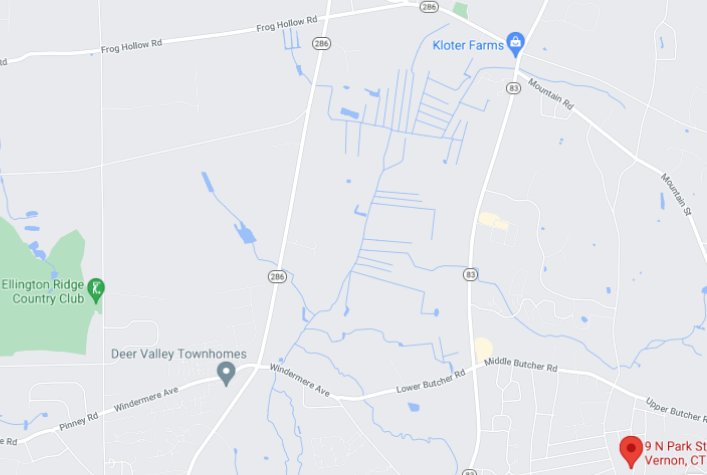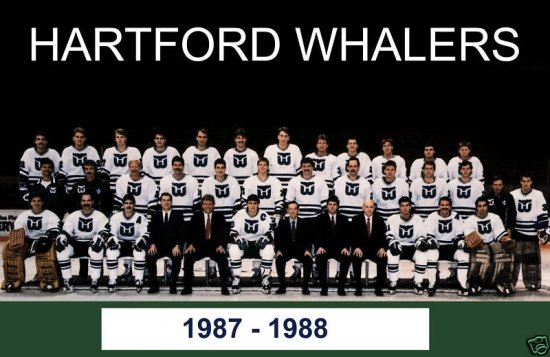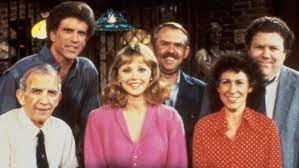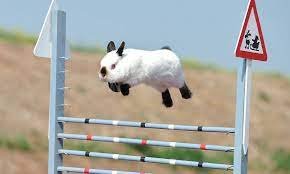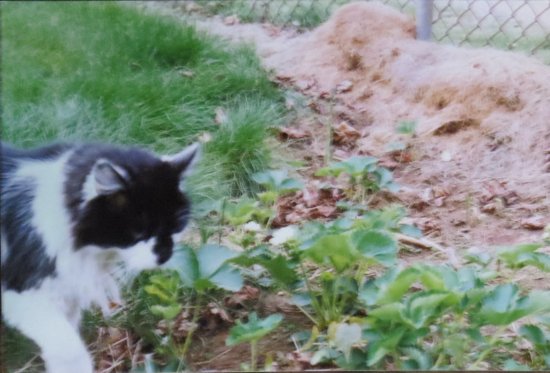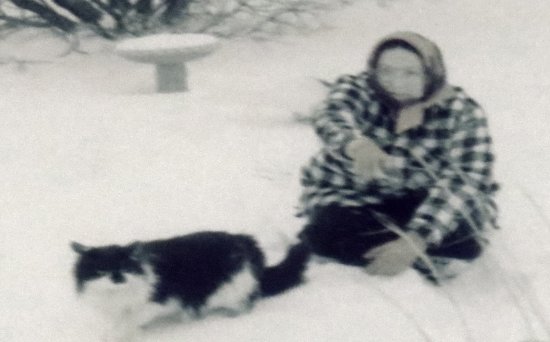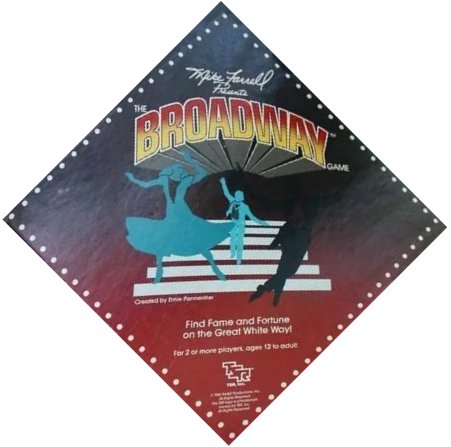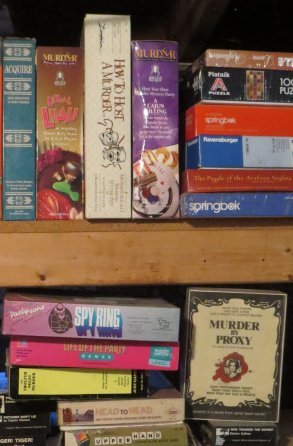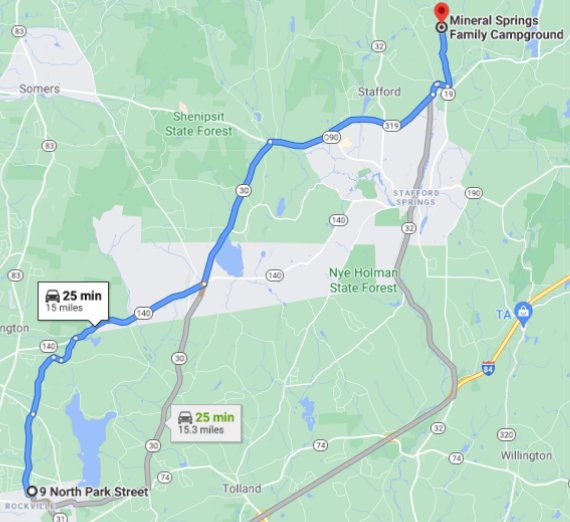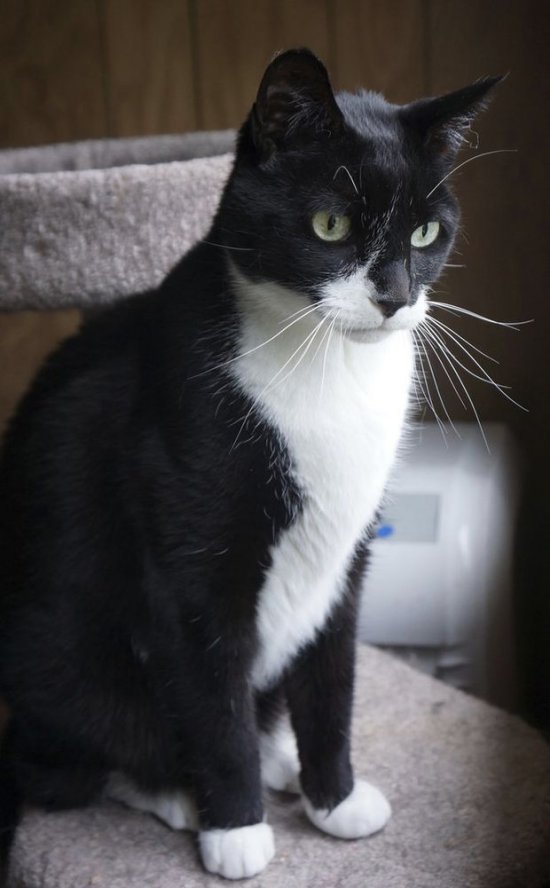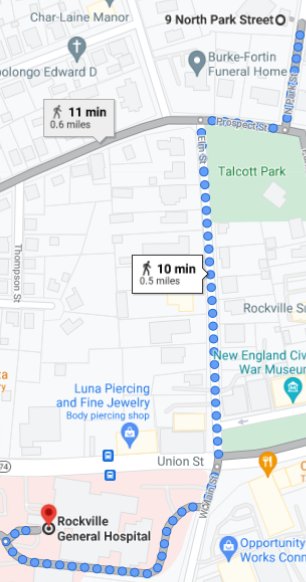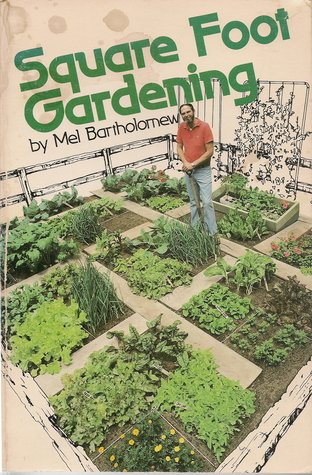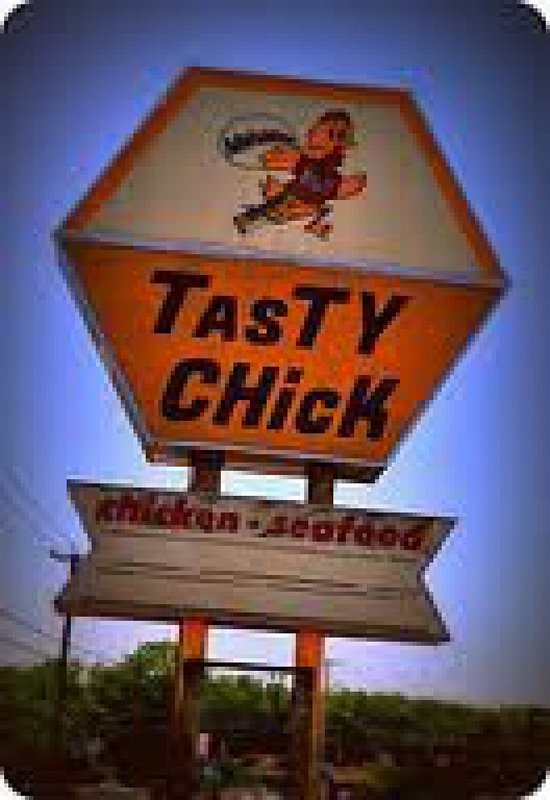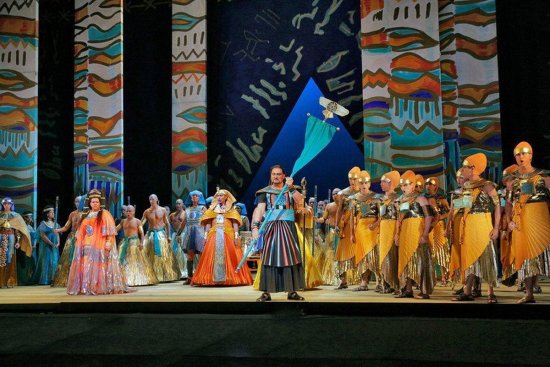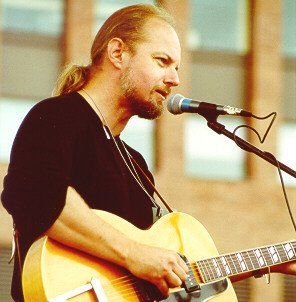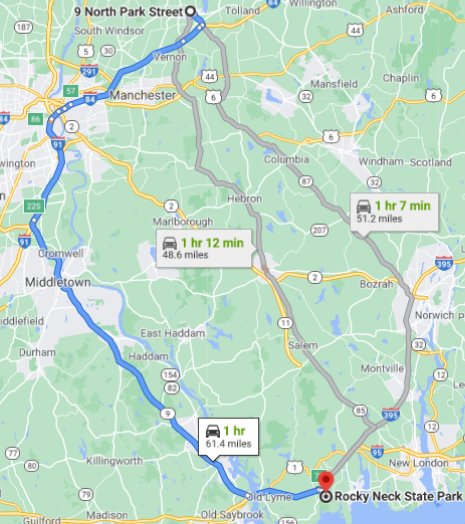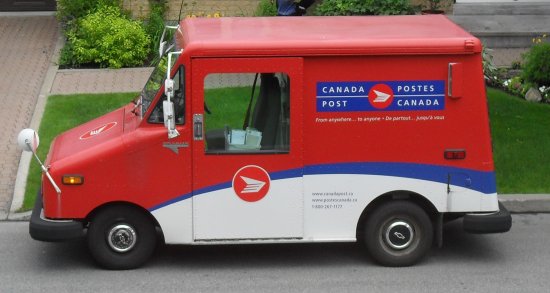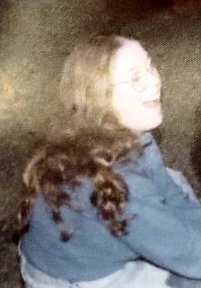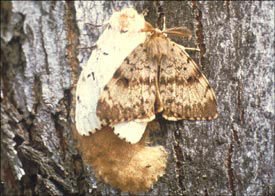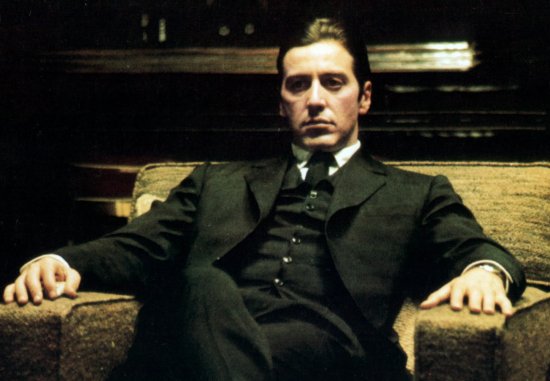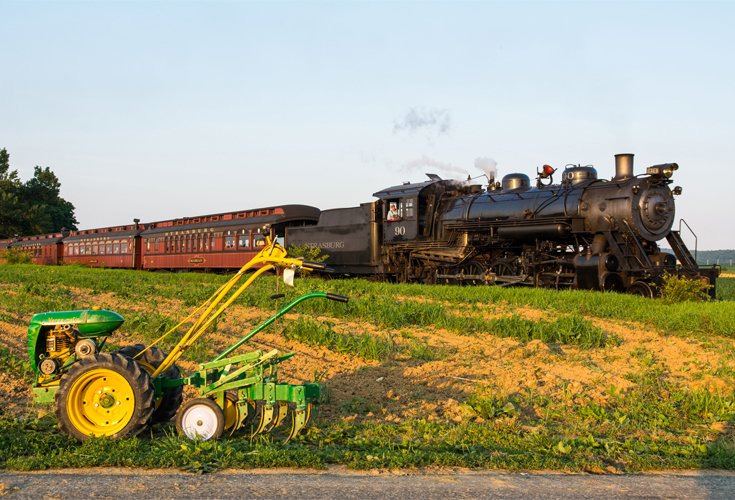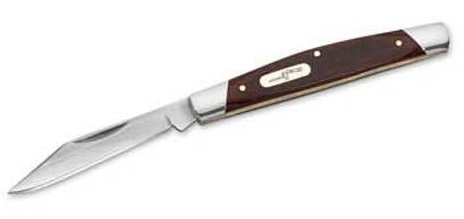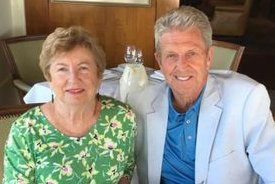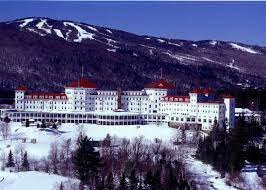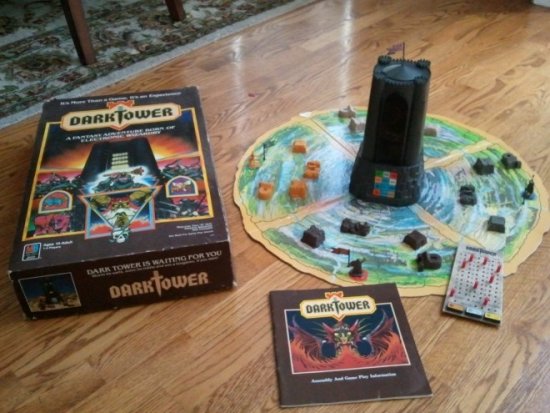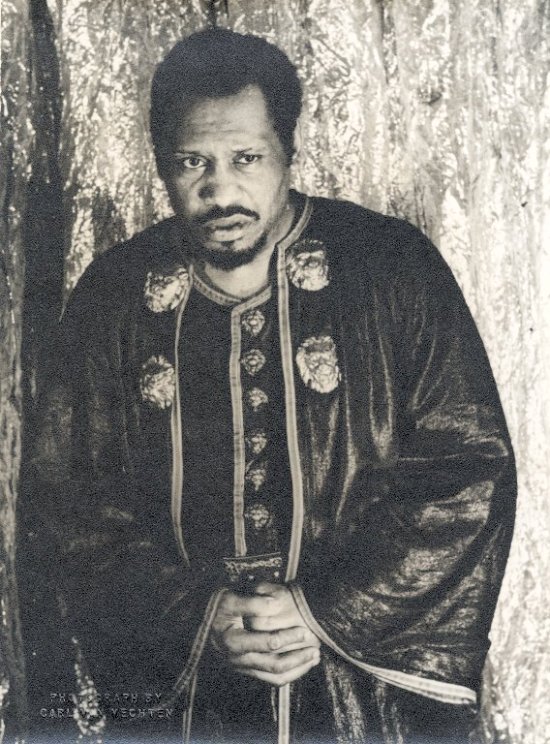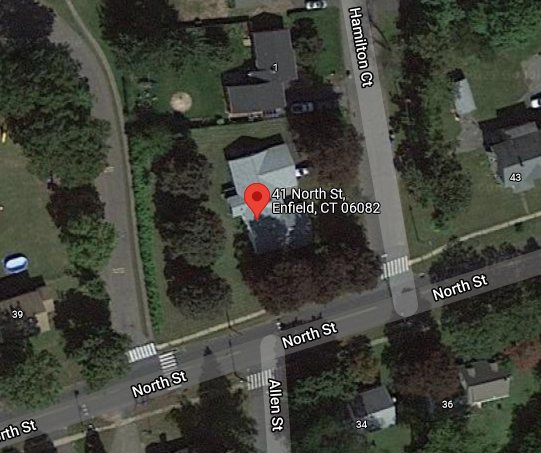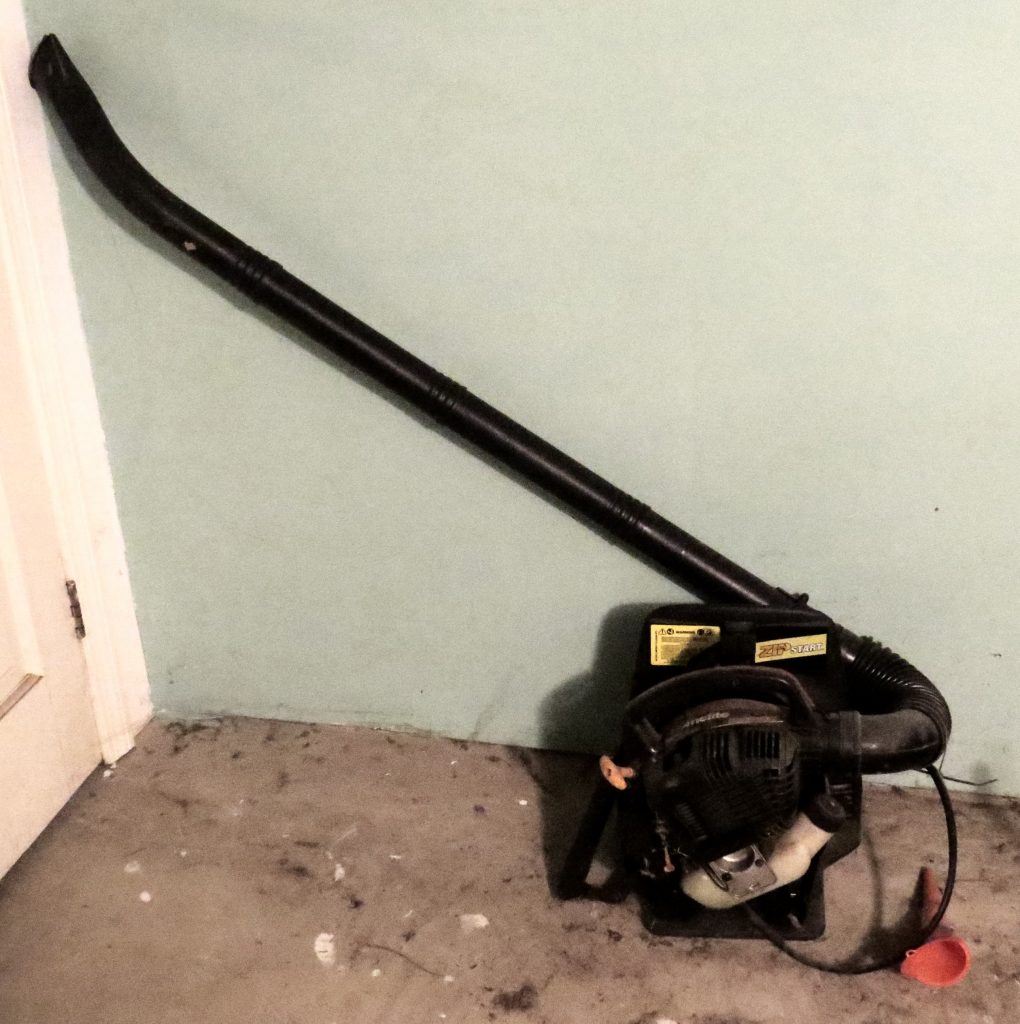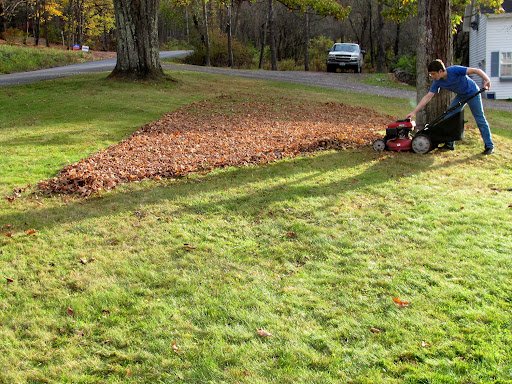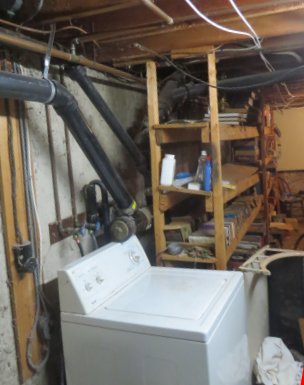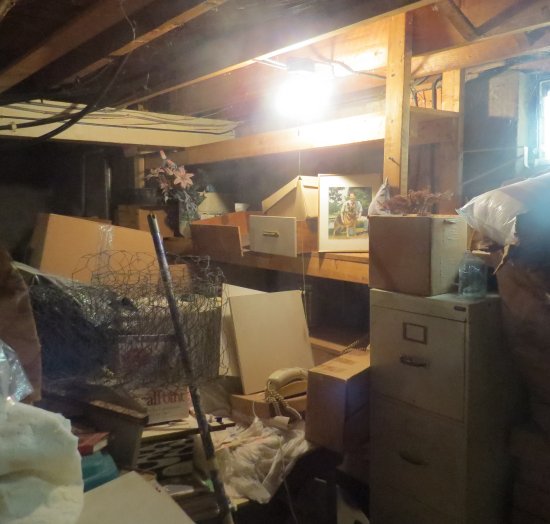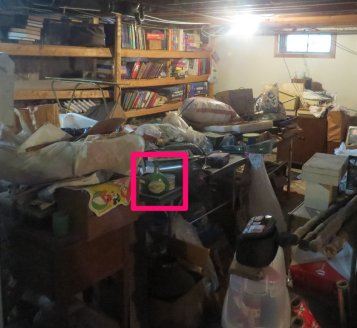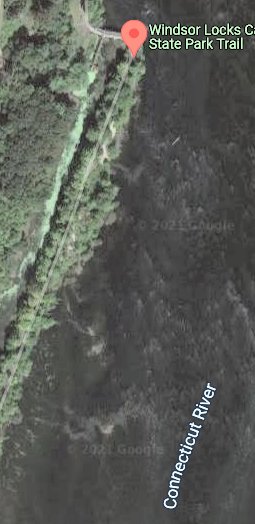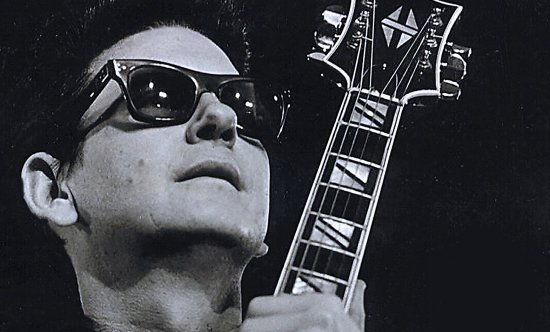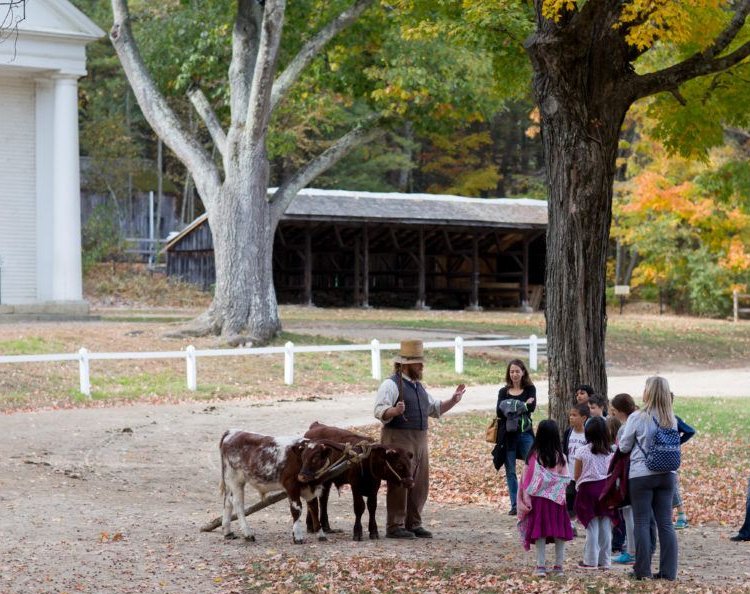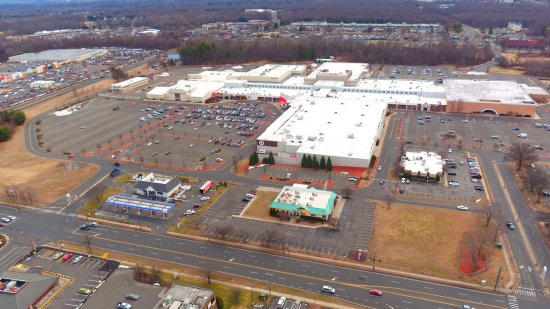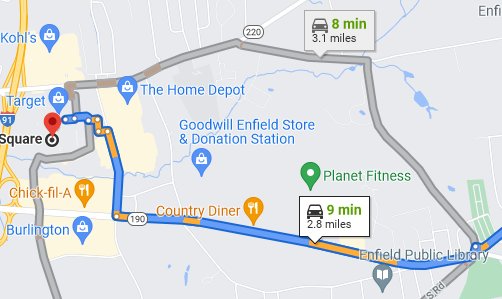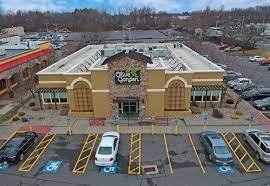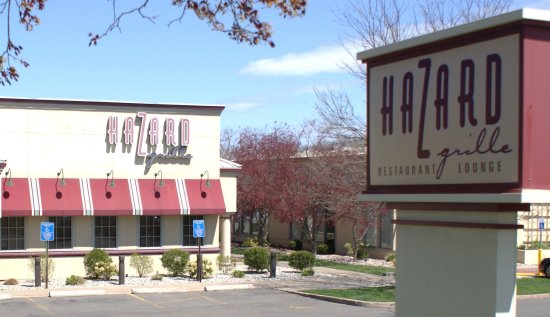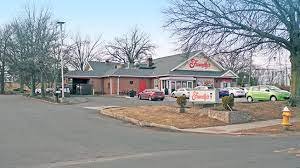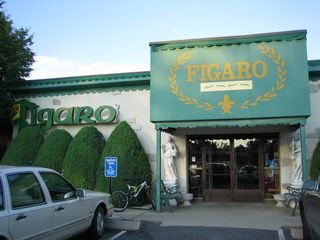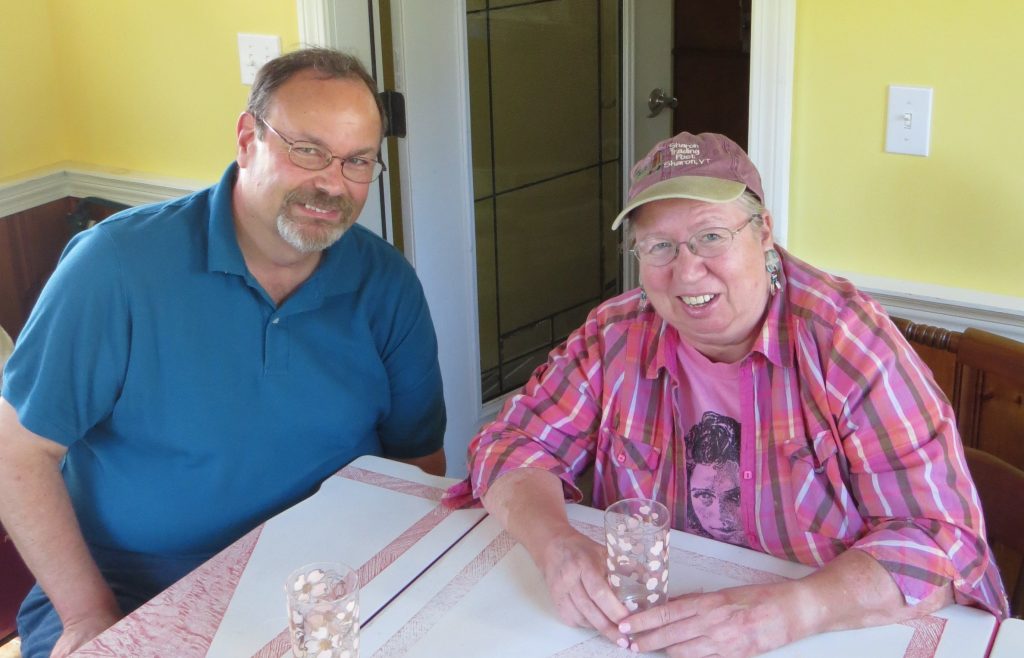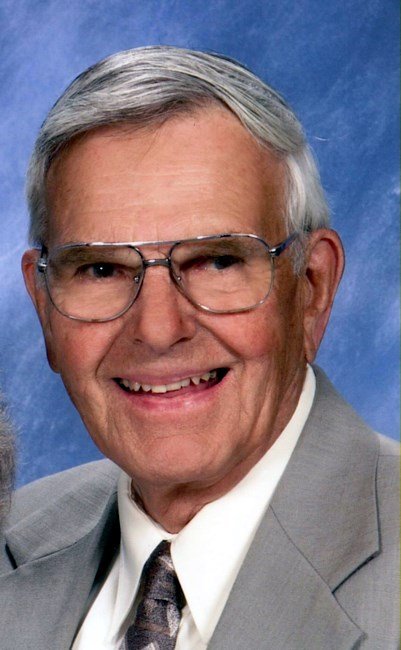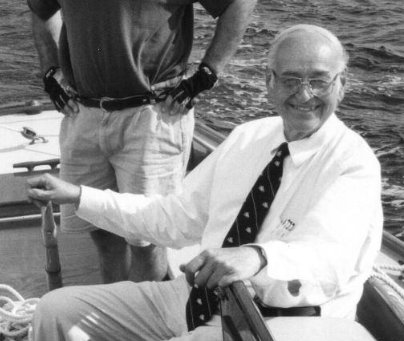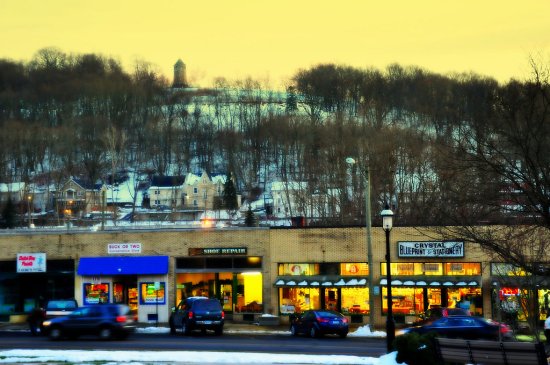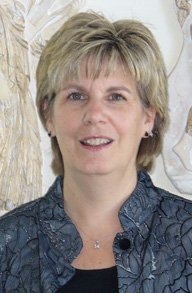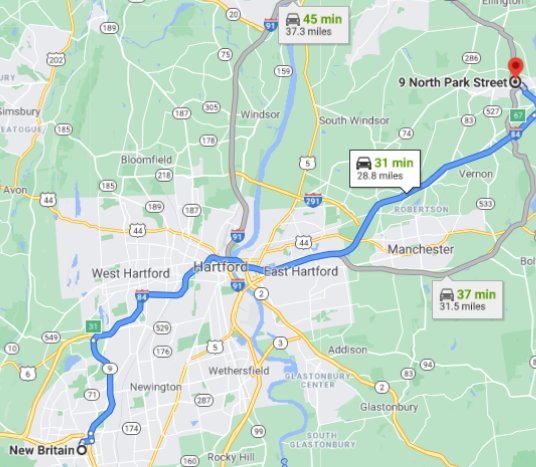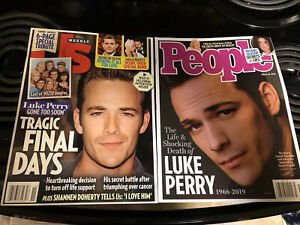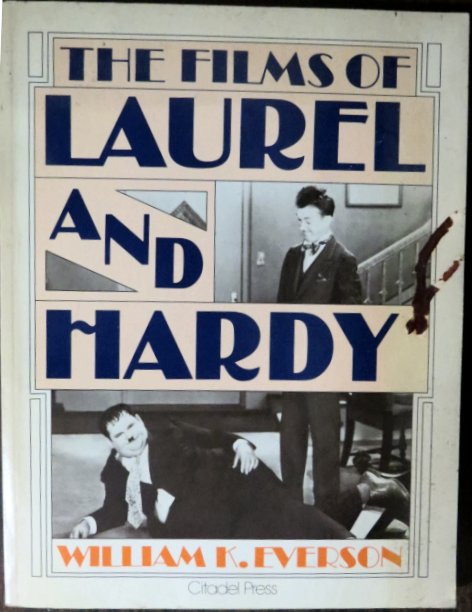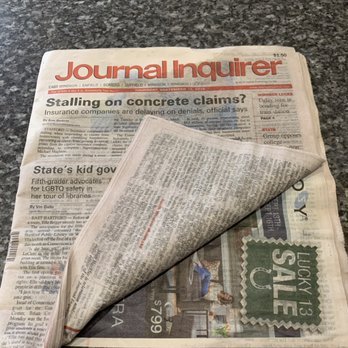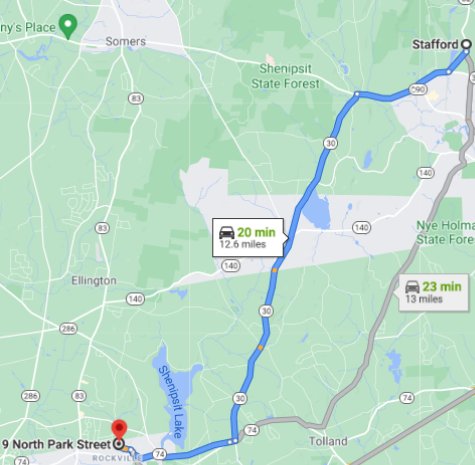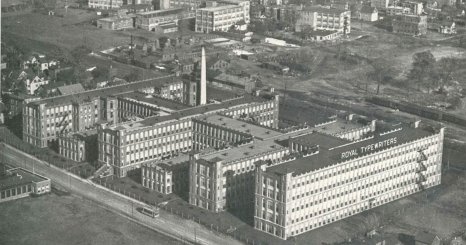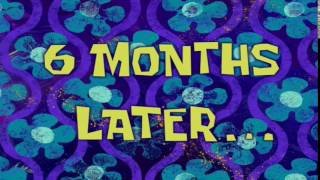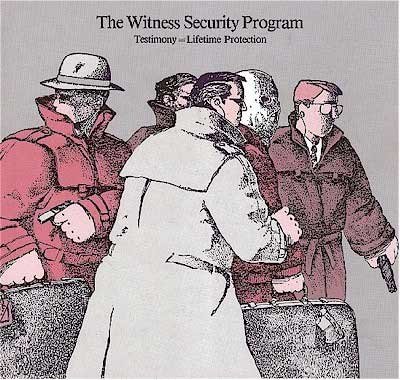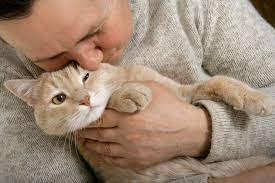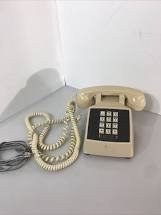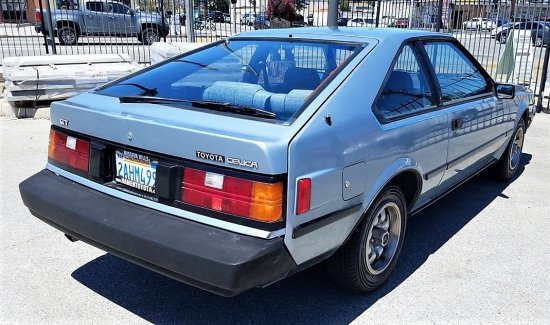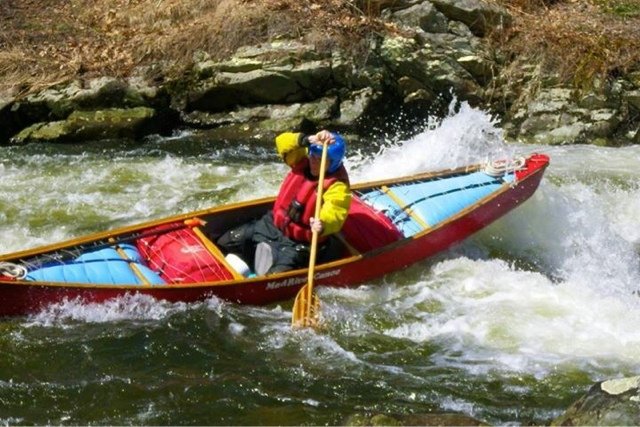Just the two of us. Continue reading
No monumental events occurred during our seven and a half years in Rockville, but I remember all kinds of smaller ones.
Sports
Jogging: I continued to go jogging a couple of times a week, but Rockville was much too hilly for an occasional runner like me. I drove my car a mile or two into Ellington to find a surface that was relatively level. I took Upper Butcher Road, which turned into Middle Butcher Road and then Windemere Ave., up to Pinney Road (Route 286). I parked my car near the intersection.
I ran up Windemere to Abbott Road, where I turned right. I ran north alongside the golf course before turning on either Middle Road or Frog Hollow Road to return to Pinney Road. The only problems that I ever encountered were dogs. A few barked ferociously and came within a few feet of my ankles, but none ever bit me.
Basketball: During the winter of 1987-88 Tom Corcoran invited me to watch a basketball game that included some players that he knew from work. It was held at a high school gym. I can’t remember if Sue came or not. The game itself was not a bit memorable, but at halftime a door prize was awarded. It was a pair of tickets to a Hartford Whalers game, and my ticket had the winning number.
Hockey: You really should listen to “Brass Bonanza”, the Hartford Whalers’ fight song while reading this section. You can find it here. It will open in a new tab.
I had only attended one hockey game in my life, an intramural game at U-M. The tickets that I won were for the last game of the season. It took place in the Civic Center3 in downtown Hartford. The opponents were the Pittsburgh Penguins.
In those days there were nineteen teams in the NHL. Sixteen of them made the playoffs. At the time of the game the Whalers had already clinched one of the last playoff spots4, but the Penguins had been eliminated. So, the game was meaningless for most purposes.
The Whalers were clearly the better team, as even a neophyte like myself could discern. They held a 2-1 lead going into the third period. The home team continued to dominate play, but they could not get the puck past the Penguins’ goalie. At the other end the Penguins only took four shots, but three of them ended up in the net. So, the visitors won 4-2.
Art Slanetz also took Sue and me to a Springfield Indians hockey game. I don’t remember much about it.
Golf: I played a few times with Denise Bessette’s husband Ray and his dad. His dad was even worse at the game than my dad. I just could not afford to play regularly; golf was too expensive.
Television
We had cable in Rockville. In the days before bundling it was reasonably priced. I watched a lot of college football, and we watched a few shows in the evening, especially Thursdays. NBC showed Cheers and Frasier. I could not get into Seinfeld.
We also had the Playboy channel for a while. Its productions were awful . One show featured a woman from England. They introduced her with “And now, from across the Pacific …”
In the mornings I sometimes went downstairs to do exercises. I remember two different shows that I watched. One had a different woman leading every day. The other one, Morning Stretch, had only one hostess, Joanie Greggains. One of her favorite sayings was, “Your grew it; you lift it!”
Pets
At some point Puca and Tonto, our tortoise, died. Thereafter the home-made snake cage in the barnboard bookshelves remained empty.
I know that we had guinea pigs in Rockville for at least a couple of years. The last one was an all-white Peruvian that I named Ratso. He loved to be petted, and he whistled whenever I did. Unfortunately, he had a tumor on his belly, and it eventually killed him.
Somehow we ended up with a very nice black rabbit named Slippers. That little guy could really leap. He could jump from the floor to the top shelf of the bookshelves, which was more than six feet off of the ground.
Slippers had a bad habit of chewing on electrical cords. I went to a local pet store that had a very knowledgeable proprietor. I waited until she was free. I then approached her to ask what I could use to prevent a bunny from chewing on the cables. She quickly answered, “Nothing.”
Slippers had a stroke, and we brought him to the vet. While we were there he let out a blood-curdling cry—the only sound that we ever heard him make. He was dead. I think that that was the saddest that I had ever felt.
In the summer of 1986 a stray cat that hung around the Elks Club gave birth to a litter of three in the courtyard behind our house. One was mostly white, one was tuxedo-colored, and one was black and white with a black mask like a raccoon’s. The tuxedo-attired one had short hair, perhaps inherited from his father; the other two had long hair. At first we called them Whitey, Blacky, and the Coon Cat. Based on her disposition, we think that Whitey was female; the other two were males. Sue wrote a children’s story about them and read it to Brian and Casey Corcoran.
We did not really plan on having cats as pets, but it did not seem too likely to us that all four of them would be able to survive the winter. We did not want to be responsible for that. So, I embarked on a plan to trap them. I bought some Purina Cat Chow1 and put a bowl of it in the courtyard about ten feet from our kitchen door. Every day I moved the bowl closer to the door. Then I left the door open and put the bowl in the kitchen. The two males came in, but the female was too timid to enter the house.
When the bowl was well inside the kitchen, and I knew that both male cats had come in to eat, I snuck out the other courtyard door and shut the kitchen door from the outside, thereby trapping them in the kitchen. The Coon Cat, whom we renamed Rocky shortly thereafter, threw himself at the door over and over while Blacky (later named Jake) sat in the corner and calmly assessed the situation.
I bought a litter box and some litter. As soon as they had grown accustomed to being with humans, we took the boys to the vet for their shots and to get them fixed. We kept our two new feline friends in the house all winter. In the spring we saw their mother hanging around the Elks Club, but there was no sign of their sister.
In the spring and summer we let Rocky and Jake roam wherever they wanted. When they wanted back in, they would wait patiently in the courtyard for someone to open the door.
In early October of 1987 Rocky did not come home for a couple of days. When he finally came to the door, his face and chest were covered with blood. We took him to the vet. He had a broken jaw. The vet wired it, and they kept him for a few days because we had a weekend planned in Washington (described above). All the staff loved him.
We brought Rocky home. Within twenty-four hours he broke the wire on his jaw. With his eight remaining lives he never looked back and lived for another seventeen years. He was incredibly athletic. I once saw him vault/climb the nine foot stone wall in our front yard in one smooth motion.
Jake was much less sociable than Rocky, but he was nearly as good an athlete. One afternoon while I was napping in the bedroom, I heard a very strange noise just outside of the window. It was the sound of Jake climbing the drain pipe for the rain gutter in hot pursuit of a squirrel that was taunting him from the ledge of the bedroom window. I don’t think that he got that squirrel, but he did figure out how to get down on his own.
Games
D&D: In the first few years after we arrived back in Connecticut, I staged a few dungeons. The best was when the debaters from Wayne State came to visit us as described above.
After that Tom Corcoran was always eager to play. Sue could usually be talked into it. Sue’s sister Betty and some of her friends could occasionally be coerced. We tried to talk a few clients into trying it, but there were no takers.
Board Games: We played a lot of board games with the Corcorans. We also played fairly often with Sue’s sister Betty. Her favorites were The Farming Game and Broadway. Sue and I occasionally played Backgammon together.
Murder Mysteries: It was easier to get people together for a Murder Mystery party, which became fairly popular in the eighties, than it was to arrange for a D&D adventure. We bought several of these games, which were sold in toy stores. The idea was that everyone was assigned a character and given secret information about the character. Only the murderer was allowed to lie. Then everyone guessed at the end.
We only played a few of these games. The quality was very uneven, as it was with the board games2. In one of them the most important clue was in the very first paragraph of the description of the setting that was read aloud. When we played it, the player who had that character (Ken Owen, introduced here) did a vivid portrayal of his role in that setting. The game was ruined. It was not his fault; he was expected to get into his character; the game was just poorly designed. Another problem was that you could only play each one once.
Camping
I have always loved camping, and when I say camping I mean sleeping on the ground in a tent that one set up for oneself, not sleeping in an RV that has more electrical doodads than a hotel. Sue liked camping, too, but the sleeping on the ground part proved to be too much for her. She bought a fold-up cot with a mattress that was about 2″ thick. That proved to be a pretty good compromise, and that mattress got considerable use after our camping days ended.
On a few occasions we spent a couple of days on our own at Mineral Springs Campground in Stafford Springs, CT. This place had spaces for a lot of trailers. Some people spent every summer there for years. We always stayed in the “primitive” areas, which were just plots set aside for people who eschewed electrical and plumbing hookups in the woods. We set up the tent and scoured the woods for firewood. On some occasions we needed to supplement what we could find with wood purchased from the campground’s store.
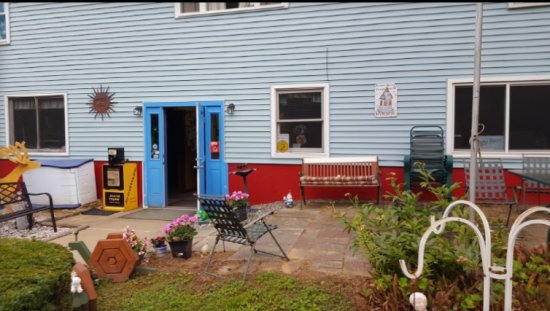
The campground had a headquarters building in and around which all kinds of activities were scheduled. There were also several areas designated for volleyball and other sports. The small swimming pool did not interest me, but I think that Sue took a dip at least once.
Many kids were forced to spend time here, and the operators did their best to give them something entertaining to do while the adults sat around the campfire and drank beer.
I would have preferred something more rustic, but, after all, this was Connecticut. It had been civilized for more than three centuries.
I relished the challenge of creating a hot supper over an open fire. I was quite proud when the result actually tasted like a well-cooked meal. Sue’s favorite part of camping was making s’mores. I can’t say that I ever developed a taste for them. I preferred my graham crackers without the gooey stuff.
In the late eighties Sue talked her nephew, Travis LaPlante, and Brian Corcoran into joining us on camping trips. If she hadn’t, I doubt that either one of them would have ever slept outside.

They were very different kids, but we all had a pretty good time. We played some board or card games together. I don’t remember the specifics, but the two boys enjoyed them. They also enjoyed tramping through the woods looking for firewood. Travis liked playing with the fire itself.
We tried a few other campgrounds after we left Rockville in 1988. Those adventures are detailed here.
Health
My health, with one exception, was fine throughout our stay in Rockville. During the winter of 1987-88 we kept our two little buddies, Rocky and Jake inside the house. Therefore, we put out a litter box for them, and they used it.
One day Jake scratched me on the back of my left hand. I took care of the wound, but it would not heal. I ran a very slight fever, and eventually a bubo appeared under my left armpit. I continued working, but I could only concentrate for a couple of hours at a time before I needed to take a nap.
We did not have health insurance, and I had not seen a doctor since my knee healed. However, I knew that I needed medical help. I made an appointment with a doctor whose office was within easy walking distance. He asked me if my vision had been affected, which would have been an indication of toxoplasmosis. I answered that it might have been, but I was not sure. It was not significant. He told me to come to the emergency room at Rockville General Hospital at 9 a.m.
He met me when I arrived, and we skipped the usual ER routine. He lanced my bubo and gave me a week’s worth of antibiotics. As soon as he lanced the bubo I felt much better, but the antibiotics did not solve the problem. A week later he lanced again and gave me a different antibiotic. This was repeated one more time.
As soon as the third antibiotic circulated in my system, the wound healed rapidly, the bubo never formed again, and my fever disappeared. In short, I was cured.
I don’t remember what the doctor billed me for this treatment, but it was extremely reasonable.
Sue’s health problems were more chronic than mine. She had put on some weight in the time that we had been together. By the mid eighties she was having real problems sleeping.
She snored fairly heavily when she did get to sleep, and she would often wake up every few minutes with a start to catch her breath. She went to a doctor. He arranged a sleep study, after which he informed her that she had sleep apnea. I am not exactly sure what the difficulty was, but she got into a dispute with the doctor about something. I told Sue not to worry about the cost, but my efforts did not help the situation. She could be stubborn that way.
A good deal of time passed, and she only got worse. She finally got a CPAP3 machine that was connected to a mask that she wore in bed. She found it uncomfortable, but it did seem to help her sleep.
Unfortunately, I could tell that her mental acuity had deteriorated during this period. Evidently she just was not getting enough oxygen to her brain.
In late 1981 I received a phone call from Vince Follert. I knew him as a friend and fellow coach and teacher at Wayne State, as described here. I also knew that he had been diagnosed with colorectal cancer and had a difficult time with the treatment.
He told me that he had waited to call until he had some good news. This was not the fast-talking, wise-cracking guy that I knew from Detroit. He had obviously been through the wringer. I don’t even remember what the new was. It did not sound that good to me.
He insisted that the cancer had nothing to do with the Diet Pepsi that he chain drank. I did not mention the cigarettes. He seemed to be invested now in the power of positive thinking.
The next call that I got was a few months later. It was from Gerry Cox, not Vince. He told me that Vince had died. I was not surprised.
Effy Slanetz, Sue’s mother, contracted some kind of illness at approximately the same time in 1987 of 1988 that I got scratched by Jake. Her symptoms were similar to mine, and the treatments seemed similar. However, she did not make the instant recovery that I did. Instead, her disease dragged on for years. She never got over it.
Gardening
I got interested in vegetable gardening by watching two television shows on Saturdays. The one that I enjoyed the most was The Joy of Gardening with Dick Raymond. It was sponsored by Garden Way, makers of Troy-Bilt products. The other was Square Foot Gardening, hosted by Mel Bartholomew. He was a little preachier and more disdainful of other approaches.
Both hosts had books promoting their approaches, and I acquired both of them. Dick’s book was filled with lovely color photos. He had fairly instructions about the best way of dealing with each type of vegetable. The production values in Mel’s book were not as high, but he also knew his stuff. Both men argued that vegetables could be planted much more closely to one another than was done by most gardeners.
I did not have much space in the courtyard, and so I used their advice to maximize my yield. The open end of the courtyard was on the south, but the walls on the east and west sides limited the morning and evening sunlight. There was not much I could do about that. I imagined mounting huge mirrors, but I was never that fanatical. Besides, I was cheap
I grew a fairly diverse array of vegetables. I tried to do without pesticides. I used bacillus thuringiensis to thwart cabbage worms. I just picked the horn worms off of the tomatoes. The only insect species for which I resorted to chemical treatments to counter was Mexican bean beetle. These little monsters arrived en masse in early July and they attached so many larvae to the undersides of the beans that I could not keep up with them.
I had the most success with cherry tomatoes and sunflowers. My three cherry tomato plants produced over 250 tomatoes, and the vines were over twelve feet long. The secret for my success, I am convinced, is that I fertilized them with Slippers’ poops.
I also grew one plant indoors over the winter. It was not as big as the ones in the garden, but it produced a reasonably good output until white flies found it. My sunflowers were well over eight feet high, but the birds always harvested them before I did. I didn’t really care.
My onions were pitiful. The bulbs that I harvested were hardly bigger than the sets that I planted in the spring. Mel claimed that you only needed a 4’x4′ patch to grow corn, but I never had much luck. Corn really needs unrestricted access to both the sun and the wind.
Food
We ate at home most of the time. I usually skipped breakfast. I ate a piece of fruit if one was around For lunch I usually ate leftovers or, even sometimes in the summer, some kind of chicken noodle soup. I preferred the Lipton’s version that had “diced white chicken meat”, but I was not picky.
For outdoor grilling we used the hibachi that we brought back from Michigan for a while. Then we upgraded to an inexpensive barbecue grill with wheels from, I think, Caldor’s. It provided a means of regulating the distance between the fire and the grill. I did not understand how anyone could grill successfully without this feature.
We patronized a few local restaurants. Tasty Chick was a very good fried chicken takeout place on Regan Road just off of Route 83. The owners, Michael and Marie McGuire5, often were behind the counter. Michael would sometimes claim that they were almost sold out. All that remained, he explained, were “beaks and toes.”
We also liked to go to the Golden Lucky6 for Chinese food. The ginger chicken wing appetizers were to die for. Once in a while we thought that we could afford to go to J. Copperfield7 for a more elegant dinner and a drink.
Live Performances
Sue and I did not attend many concerts, but in October of 1981 we were among the 40,000+ in attendance at the performance of Giuseppe Verdi’s Aida at the Hartford Civic Center. In some ways it was not really an opera. The singers were all wearing cordless microphones, which is absolutely prohibited in most opera houses. Because of the Civic Center’s poor acoustics, they had to allow this.
The emphasis in this production was on spectacle. “The Grand March” scene included not just dancers, but elephants, camels, and, if I remember correctly, snakes.
Although it has, in my opinion, the best final scene in all of opera, Aida has never been one of my favorites. The producers of this extravaganza spent a half million dollars on the production. There was nothing left to hire top-notch singers. Even so, I think that everyone had a pretty good time. The New York Times sent a reviewer, Theodore W. Libby, Jr. He had a similar opinion, which can be read (for free) here.
The next year they tried to repeat the experience with a production of Turandot, an outstanding opera of imperial China by Giacomo Puccini (finished by Franco Alfano). We didn’t go, and nearly everyone else stayed away, as well. I am embarrassed to report that I had never heard of this opera at the time. If I had been familiar with it, I might have gone. In the ensuing years I have probably listened to it fifty times or more.
Sue and I also attended a few second- or third-tier concerts. I can remember three of them:
- Sue and I went to see Livingston Taylor, James Taylor’s brother, perform at a coffee house in Hartford. It was a guy’s name followed by “‘s”, but I cannot remember it. I enjoyed it, but … My friend from U-M Raz (John LaPrelle) went to high school with James Taylor in North Carolina. He never mentioned Livingston, I presume.
- We also saw Garnet Rogers, the brother of Stan Rogers. Stan’s album Northwest Passage, was one of the very few that I bought during this period. I heard Stan’s music on a show on WWUH radio that featured acoustic music. I still listen to the album on an mp3 player when I go walking.
- Sue and I went up to the Iron Horse Cafe to hear Donovan. He was one of Sue’s idols when she was a teeny bopper.
In truth I was slightly disappointed by all of these concerts. They weren’t bad, but there was no thrill. By the way, I think that all three of these guys are still alive and performing.
Sue loved (and loves) every type of live music. She probably attended additional concerts with friends or by herself.
1. In the subsequent thirty-five years I have never fed our cats any product other than Purina Cat Chow. None of them has ever had an illness more serious than a hairball. When people tell me that their cats will not eat dried cat food, I always reply, “Maybe not in the first week, but they will eat it.”
2. The quality of some games was so bad that I could not believe that anyone had ever tried to play them before they were marketed. Others were clearly ripoffs of other games that took advantage of a popular movie or television show.
3. Stafford Springs is the least “Yankee” of all New England’s towns. Its principal claim to fame is its speedway. The main street of town is often filled with motorcycles. It feels much more like Kentucky or Tennessee.
4. CPAP stands for continuous positive airways pressure. Sue eventually found a much less intrusive model.
5. The McGuires ran Tasty Chick from 1975-89. It stayed open under separate management until the early twenty-first century. Michael McGuire died in 2021. His obituary is here.
6. The Golden Lucky opened in 1983 and closed in 1988. The sad story is documented here. We never had a bad meal there.
7. J. Copperfield was in business from 1982 to 1996.

